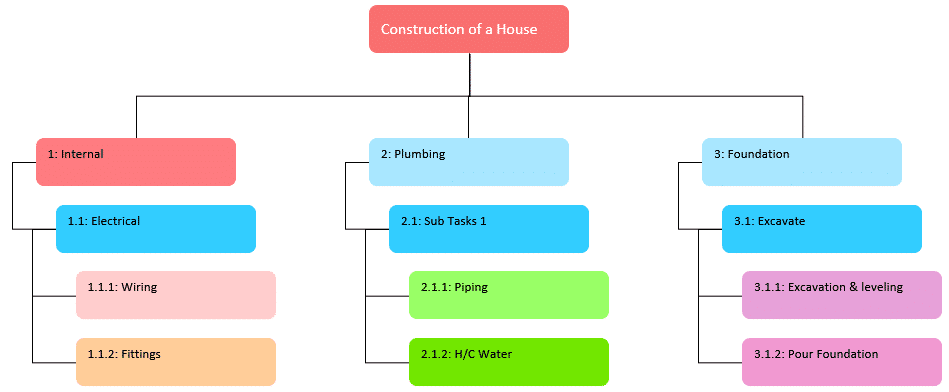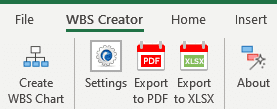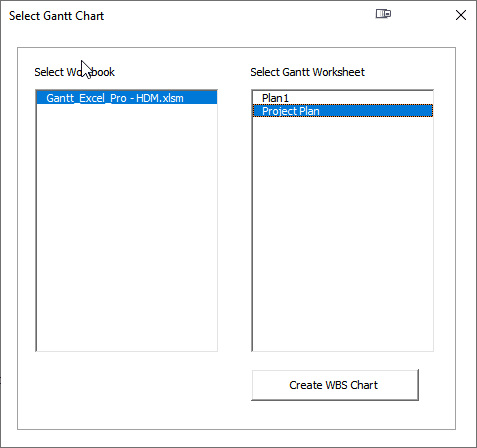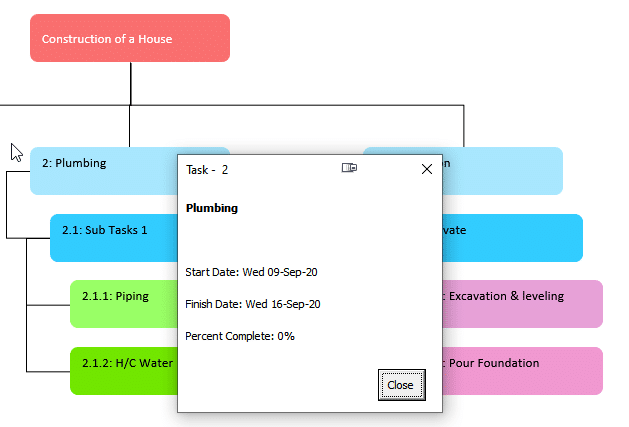Work Breakdown Structure - WBS 101
What is Work Breakdown Structure?
The building blocks of a project schedule start with a Work Breakdown Structure (WBS). Breaking your project down into smaller tasks and sub tasks is a common productivity technique used to make the project more manageable .
The WBS is a hierarchical reflection of all the work in the project in terms of deliverables. In order to produce these deliverables, work must be performed.
The Project Management Institute (PMI) Project Management Book of Knowledge (PMBOK) defines the Work Breakdown Structure as a “deliverable oriented hierarchical decomposition of the work to be executed by the project team.”
WBS is a hierarchical and incremental decomposition of the project into phases, deliverables and work packages. It is a tree structure, which shows a subdivision of effort required to achieve an objective; for example a program, project, and contract.
Creating a Work Breakdown Structure is a team effort and is the culmination of multiple inputs and perspectives for the given project. One effective technique is to organize a brainstorming session with the various departments that will be involved with the project. Project teams can use Gantt Excel to identify major deliverables, sub-deliverables for a project.
The goal of a Work Breakdown Structure is to clarify the division of tasks and the accompanying responsibilities. In addition, it gives a good overview of the scheduling of each individual activity and the total duration of the project.
How to Make a Work Breakdown Structure?
Creating a Work Breakdown Structure is a team effort and is the culmination of multiple inputs and perspectives for the given project. One effective technique is to organize a brainstorming session with the various departments that will be involved with the project. Project teams can use Gantt Excel to identify major deliverables, sub-deliverables for a project.
A good Work Breakdown Structure is created using an iterative process by following these steps and meeting these guidelines:
- Gather Project Documents
- Start by gathering all critical project documents.
- Identify documents containing project deliverables, such as the Project Charter, Scope Statement and Project Management Plan (PMP) subsidiary plans.
- Identify Key Team Members
- Identify all project team members and stakeholders.
- Analyze all documents and identify the deliverables.
- Define Level 1 Elements
- Define the Level 1 Elements. Level 1 Elements are summary deliverable descriptions that must capture 100% of the project scope.
- Verify 100% of project scope is captured.
- Decompose Breakdown Elements
- Begin the process of breaking the Level 1 deliverables into lower Level deliverables. This “breaking down” technique is called Decomposition.
- Continue breaking down the work until the work covered in each Element is managed by a single individual or organization. Ensure that all Elements are mutually exclusive.
- Discuss with your team-members, would any additional decomposition make the project more manageable? If the answer is “no”, the WBS is done.
- Create WBS Dictionary
- The WBS Dictionary is a description of the work covered in each Element in the WBS. The lowest Level Elements in the WBS are called Work Packages.
- Create the WBS Dictionary descriptions at the Work Package Level with enough detail to ensure that 100% of the project scope is covered. The descriptions should include information such as milestones, risks, owner, costs, etc.
- Create Gantt Chart
- Decompose the Work Packages to activities as appropriate.
- Enter the Work Breakdown Structure into Gantt Excel for further scheduling and project tracking.
The goal of a Work Breakdown Structure is to clarify the division of tasks and the accompanying responsibilities. In addition, it gives a good overview of the scheduling of each individual activity and the total duration of the project.
Create WBS Charts from Gantt Excel Plans
You can easily create beautiful WBS Charts from your Gantt Excel Plans using our WBS Creator for Gantt Excel Template.
All you have to do is to click the Create WBS Chart button, it will scan your project and create a beautiful WBS chart in seconds.
- Download WBS Creator Excel Template from the link below.
WBS Creator for Gantt Excel - Open the file and you will see a WBS Creation Menu
- Open your Gantt Excel Project file.
- Click on the Create WBS button
- Select the Project Plan from the list.
- And almost instantly, WBS Creator creates a professional looking WBS Chart in literally milliseconds.
- You can even click on the task names to open up the Task Detail form.
The key benefit to WBS Creator is its ease-of-use translating project activities in Gantt Excel into professional work breakdown structures.
If you don’t have Gantt Excel you can use the WBS Creator Excel Template. Its free and it is easy to use.
How to Use a Work Breakdown Structure?
The Work Breakdown Structure is used for many different things. Initially, it serves as a planning tool to help the project team plan, define and organize scope with deliverables. The WBS is also used as the primary source of schedule and cost estimate activities. But, its biggest contributions to a project are is use as a description all of the work and as a monitoring and controlling tool.
The WBS provides the foundation for all project management work, including, planning, cost and effort estimation, resource allocation, and scheduling.
Therefore, one should take creating WBS as a critical step in the process of project management.




